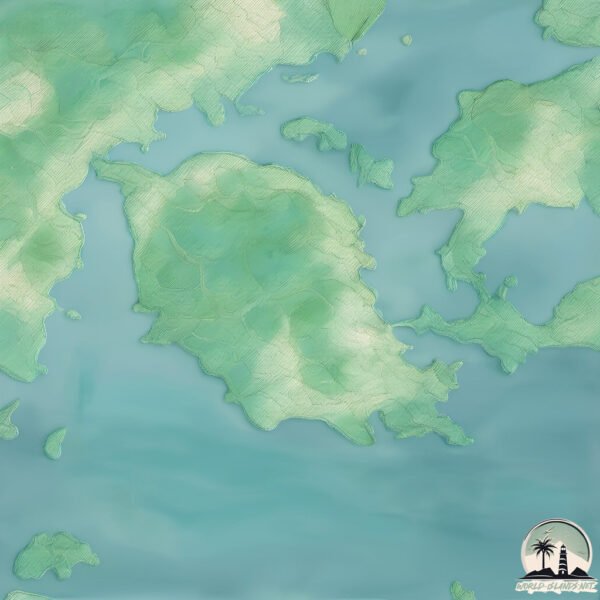Welcome to Wando , a Temperate island in the Japan Sea, part of the majestic Pacific Ocean. This guide offers a comprehensive overview of what makes Wando unique – from its geography and climate to its population, infrastructure, and beyond. Dive into the details:
Geography and size of Wando
Size: 91.6 km²Coastline: 70.1 kmOcean: Pacific OceanSea: Japan SeaContinent: Asia
Wando is a Medium Island spanning 92 km² with a coastline of 70 km.
Archipel: –
Tectonic Plate: Amur – A minor tectonic plate in the region of the Amur River at the border of Russia and China, involved in complex interactions with the Pacific and Eurasian plates.
The geographic heart of the island is pinpointed at these coordinates:
Climate and weather of Wando
Climate Zone: TemperateClimate Details: Humid Subtropical ClimateTemperature: Hot Summer
Climate Characteristics: With continuous rainfall and hot summers, this climate is common in some coastal regions, supporting diverse vegetation.
Topography and nature of Wando
Timezone: UTC+09:00Timezone places: Asia/TokyoMax. Elevation: 458 m Mean Elevation: 114 mVegetation: Evergreen Broadleaf ForestTree Coverage: 50%
The mean elevation is 114 m. The highest elevation on the island reaches approximately 458 meters above sea level. The island is characterized by Hills: Gently sloping landforms with rounded tops, having a maximum elevation between 200 and 500 meters. Hills contribute to a varied landscape on islands.
Dominating Vegetation: Evergreen Broadleaf Forest
Vegetation: 14 vegetation zones – Exceptionally Diverse Island
Infrastructure and Travelling to Wando
Does the island have a public airport? no .
Does the island have a major port? no .
The mean population of Wando is 82 per km². Wando is Gently Populated. The island belongs to South Korea .
Continuing your journey, Sinjido is the next notable island, situated merely km away.
#24. Things to do on Wando Island 1/2 | 완도에서 할 수 있는 재미있는 일들 (Part 1/2) | South Korea
채널을 지탱할 김밥을 사주시면 됩니다 You can support the channel by buying us a Gimbab!
#24. Things to do on Wando Island 1/2 | 완도에서 할 수 있는 재미있는 일들 (Part 1/2) | South Korea
채널을 지탱할 김밥을 사주시면 됩니다 You can support the channel by buying us a Gimbab!
채널을 지탱할 김밥을 사주시면 됩니다 You can support the channel by buying us a Gimbab!
Wando County Promotional Video , 2018
There is Korea's best marine park with more stories than national ...
There is Korea's best marine park with more stories than national parks. It's the heaven of algae and the breakdown of abalones!
Best place for camping & fishing in South Korea Wando Island the shining crown of southern Korea
WANDO, South Jeolla Province ― Few travelers have heard of it, and the ...
WANDO, South Jeolla Province ― Few travelers have heard of it, and the locals are not passionate about promoting it, yet Wando ...
South Korea is classified as Emerging region: MIKT: Mexico, Indonesia, South Korea, and Turkey – Economies recognized for their development potential and emerging market status. The level of income is High income: OECD.
News – Latest Updates and Headlines from Wando
Stay informed with the most recent news and important headlines from Wando. Here’s a roundup of the latest developments.
Loading...
Please note: The data used here has been primarily extracted from satellite readings. Deviations from exact values may occur, particularly regarding the height of elevations and population density. Land area and coastline measurements refer to average values at mean high tide.

